iFi hip-dac2 Sound
Given that this is clearly a unit designed to be used on the go, or while travelling, for my testing I connected the hip-dac2 to an Android phone and a Macbook, playing a combination of streamed and on-device files. Both of these have their own headphone ports, so I was able to get a sense for the level of improvement over stock.
For listening, I used the Kiwi Ears Orchestra IEMs via the single-ended 3.5mm port, and for more of a load challenge, my 300 Ohm Sennheiser HD650 headphones, connected to the 4.4mm balanced port.
Overall I found the iFi easily justified itself as an improvement over the onboard DAC/amps when paired with IEMs, offering a more detailed and rich presentation than either the smartphone or the Macbook. An unexpected surprise was just how useful the PowerMatch and XBass buttons on the hip-dac2 proved to be.
Performance with my more demanding HD650s was less impressive, even with PowerMatch turned on. I found the sound more closed-in, less spacious, lacking sparkle. The hip dac has a reputation for having a relatively warm sound signature, as do the HD650s, so perhaps this is just not a good pairing. It may be simply asking too much of a portable unit to adequately power less sensitive headphones.
All you need for better portable audio.
Bass
Breaking the sound review down into the three bands further reveals the difference in experience between the IEMs and more power hungry headphones I used. There was a quantity of bass with both, but I did not find a quality of bass in both cases, with the HD650s sounding relatively muddy compared to the Kiwi Ears IEMs.
With these IEMs, which are relatively light on bass response themselves, the XBass boost helped produce a more full low end on Bambro Koyo Ganda by Bonobo, perhaps a bit much for extended listening.
Midrange
The mids were where I felt the hip-dac2 did best, providing me with good separation and detail. Again, this was better on the more sensitive IEMs, and really brought out the best on both vocals and a broad range of natural instruments. Acoustic drums had a good level of texture, although I felt they were lacking in attack compared to desktop DAC/amps I’ve used.
Treble
The top end signature is softer, more rolled-off than I would typically prefer, and on some tracks sounded simply too grainy, lacking in sparkle. The Kiwi Orchestras are relatively bright sounding IEMs, but the treble sounded more muted through the hip-dac2 than I’m used to. This was further exaggerated on my HD650s, where I was really lacking a sense of openness and space at the top end.
Музыка для души и «цапанье» только в помощь
Модули ЦАП немного сложнее, чем, скажем, выбор пары наушников, поэтому мы собрали эти полезные рекомендации, в которых рассказывается об основных функциях, которые следует учитывать.
ВХОДЫ И ВЫХОДЫ
Если вы посмотрите на цап, вы заметите, что большинство из них имеют несколько типов входов (оптические, коаксиальные, USB и другие). Хорошее эмпирическое правило — выбирать устройство с разными типами ввода, потому что это означает, что вы можете использовать его с широким спектром устройств, от мобильных телефонов и планшетов до телевизоров и даже проигрывателей.
Что касается выхода, большинство из них поддерживают классический выход 3,5 мм (для наушников), но современные устройства также поддерживают подключение по BT.
ДРОЖАНИЕ или ДЖИТТЕР
Джиттер — это тип искажения (или шума), который можно услышать в верхней части звука, и делает его менее приятным. Это происходит, когда ЦАП не оснащен технологией, необходимой для декодирования воспроизводимого файла, или не поддерживает необходимые фильтры для создания идеального качества звука.
Чем лучше ЦАП, тем меньше джиттер и тем лучше будет звук.
ПОДДЕРЖИВАЕМЫЕ ФОРМАТЫ ЗВУКА
Модуль ЦАП не сможет многое сделать с сильно сжатым форматом MP3, потому что сжатие уничтожает части аудиофайла. Таким образом, если вы хотите убедиться, что ваши деньги потрачены не зря, вам нужно приобрести устройство, которое будет работать с качеством CD или выше.
Это означает, что устройство должно поддерживать такие форматы, как WAV, FLAC, ALAC (Mac) или PCM без потерь или DSD.
КОМПАКТНЫЙ ПРОТИВ ПОЛНОРАЗМЕРНОГО
Современные модули ЦАП обычно бывают компактными. Из-за последних технологических достижений они по-прежнему обладают множеством интересных функций, но у них не так много доступных портов и соединений.
С другой стороны, у полноразмерного устройства достаточно места для широкого спектра соединений, наборов микросхем и расширенных настроек. Тем не менее, даже несмотря на то, что они очень привлекательны с точки зрения возможностей, разница в цене может побудить многих меломанов придерживаться компактных версий.
JCALLY JM6
Один из множества ультрабюджетных ЦАПов на чипе CX31993 от Conexant. Свой экземпляр брал здесь, но на Aliexpress множество магазинчиков продают варианты под маркой CX-Pro.
Хит нынешнего сезона. В интернете можно найти обзоры подобных «свистков» с хвалебными отзывами.
За эти деньги конкурент у него только такой же по форм-фактору USB-ЦАП на CS46L41, о котором речь пойдет ниже.
Два наиболее важных достоинства, которые сразу же можно упомянуть: вообще не греется и практически не жрет батарею. У меня телефон с этим свистком за час воспроизведения музыки потребляет столько же, сколько и при воспроизведении без ЦАПа, просто через 3.5mm разъем — всего 2% батареи. Это лучший показатель среди всех побывавших у меня USB-ЦАПов.
Мне показался, ярким, быстрым (резкие и хлесткие басы), стремящимся выжать из себя максимум детализации на высоких.
К сожалению, для меня в звуке, во-первых, не хватает глубины. В частности, басы быстрые и четкие, но в них нет той мощи и объема, которая присутствует у других моделей. Во-вторых, возникает ощущение скудости «звуковой палитры», если так можно выразиться. Кажется, как будто весь звук зажат в каком-то узком спектре и это со временем начинает утомлять.
По итогу, долго слушать я его не могу, быстро надоедает.
Sound
I tested the iFi hip dac using various headphones and earphones, including the Spirit Torino Radiante, the HiFiMAN HE-560, the Shozy Form 1.4 and the NiceHCK NX7 Pro.
There is a tiny bit of hiss in the background, but it’s so faint it is only noticeable when there is perfect silence and no music is playing. Plus, I have only been able to hear it using highly sensitive IEMs.
As far as I am able to discern, the iFi hip dac offers no colouration of the sound it produces. In fact it offers a neutral signature which makes it undistinguishable from other gear I’ve tried (e.g. Burson Audio Playmate, Shanling UP4). In fact it’s even really good as far as speed is concerned, with a fast transient response. I can’t really hear anything that strays from neutrality and a reproduction of music “as it is”. If there is any difference, then I can’t hear it (and I probably would not be able to measure it, either).
Contrary to previous devices by iFi, the hip dac does not offer their famous 3D+ technology. The XBass tech stayed, though, and it increases presence of lower frequencies. In particular, it gives the largest boost to sub-bass with a decreasing emphasis as frequency goes up. It is very well implemented as it does not make bass overwhelming and instead it only gives it more presence (though of course that also depends on the signature of the headphones, as bassy headphones will probably end up having too much bass).
Synergy
Efficiency
Would I pair the hip-dac2 with a set of Hifiman HE6SE or a Fostex T50? Heck no. There is a limited amount of power after all so I would stick to medium to high-efficiency cans. Headphones from a Grado SR80x to the HIFIMAN Sundara plus everything else in between should be just fine to pair it with.
What about IEMs? Any set will do really. My hardest set to drive presently is my pair of TRI I3’s with a 3-way driver array and a planar driver that needs a good amount of power to sound optimal and I could take them to ear-splitting levels on the hip-dac2.
Power
Again, I must say that the power rating of both headphone output ports seems conservatively rated to me because I successfully used the hip-dac2 with some full-sized headphones that are somewhat demanding.
Of the three Hifiman headphones I currently own, the Arya is probably the hardest to drive and the hip-dac2 obtained a considerable amount of loudness and performance out of them. I was quite surprised.
Pairings
The hip-dac2 has a warm signature but it settles fine with bright sounding headphones and IEMs alike because if the signature is too bright you just hit the Xbass which compliments well with the higher frequencies and brings back some needed balance and a more defined bottom end on bright headphones.
Even if you do pair the hip-dac2 with a bright headphone and decide the Xbass is not for you, the cleanliness of the high-frequency production assures you’ll get clean highs with a minimum amount of fatigue and high-frequency breakup.
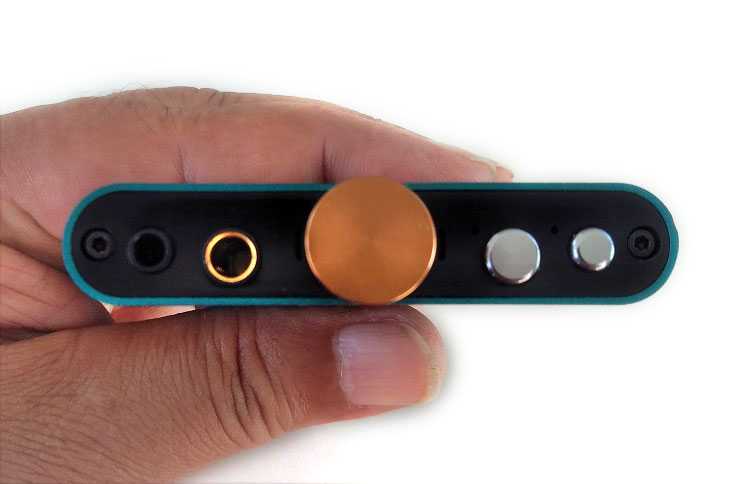
Sound
(Image credit: iFi)
We commence our listening with an Apple Music Hi-Res Lossless playlist on our iPhone. Upon streaming Diamond Eyes (feat. Sia) by Eddie Benjamin, we almost remove our Austrian Audio Hi-X55 headphones to check where the sound is coming from, so precise is the placement of the therapist speaking over to our left (where our phone is). The bass is expansive, regimented and impactful as layered voices, reverb and assorted sonic articles approach each of our ears.
Our playlist continues to In the Air Tonight by Phil Collins where the pared-back intro, peppered with guitar shrieks and dissonant chords, allows the hip-dac 2 to shine through the midrange and treble. When Collins’ voice joins centrally, we also become aware of how much processing has been applied to his vocal, details lesser DACs cannot deliver – and definitely not at this price. At around three minutes in, there’s a moment in the track that, when done well, feels as if the vast darkness and wasteland of the intro suddenly condenses and rushes over you like a freight train. To say that the hip-dac 2 doesn’t disappoint here, and in terms of dynamics generally, is an understatement.
We switch to a Tidal Masters playlist accessed from our laptop, and Libertango by Yo-Yo Ma sees juicy cello meet driving tango beat, involving everything from a scratchy guiro behind our left ear to an accordion on the right of Ma’s detailed string passages, and a violin to his left. All instruments are three-dimensional, textured and emotive across the frequencies in a cohesive and impressive mix for the level.
Is it better than the original hip-dac? Considering the first-gen’s five-star review, it might seem a tough ask, but following our lengthy listening sessions we conclude that yes, there is improvement through the leading edges of notes, the bass snap, and the overall exuberance with which this DAC relays our music – not only when accessing MQA files but across the course of our testing. The hip-dac 2’s character is just slightly more forward-focused than the original, but here that is no criticism since it serves to firm up any inkling of softness around notes. Stream a Tidal Master file of Maxwell’s Cold and the initial drum fill and bass over by our right ear feels ever so slightly crisper, deeper, and with an extra few inches of breathing room to resonate.
Подключение, управление и ПО
Как описано выше, для того, чтоб подключить комбайн к смартфону либо ПК, достаточно просто соединить кабелем IFI HIP DAC2 и источник. Девайс распознается автоматически, никаких специальных драйверов не требуется. Но, тестируя устройство, я столкнулся с одним моментом, который меня огорчил.
Если вы являетесь пользователем iPhone, то приготовьтесь, что из коробки невозможно будет использовать ЦАП, так как производитель просто-напросто не положил туда кабель необходимого формата. Нет никакой проблемы купить его отдельно (кстати, производит его та же компания IFI) или вообще оригинальный переходник от Apple, но чем вызвана дискриминация яблочников — не ясно!
Управляется устройство легко и логично, элементы управления, кнопки, ручки громкости работают отлично. При личном использовании ни разу не возникали вопросы к работоспособности этих элементов.
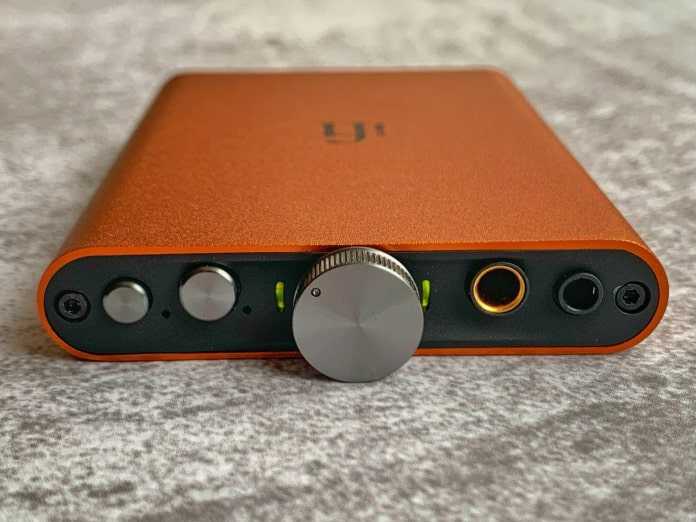
Зачем нужен NOS DAC
Традиционно, PCM цифро-аналоговый конвертер содержит оверсемплер для того, чтобы более эффективно использовать . Потому, что аналоговый фильтр является обязательной частью PCM и DSD ЦАП.
Non-oversampling цифро-аналоговый конвертер используется для того, чтобы избавиться от артефактов (искажений) оверсемплинга (звона цифрового фильтра, неравномерности амплитудно-частотной характеристики в полосе пропускания фильтра и, в некоторых случаях, фазовых искажений). По сути, это обычный DAC без модуля оверсемплера и цифрового фильтра.
По мнению автора, NOS ЦАП не является отдельным типом цифро-аналогового преобразователя. Давайте взклянем на изображение ниже.
NOS DAC. Non-oversampled цифро-аналоговый конвертер
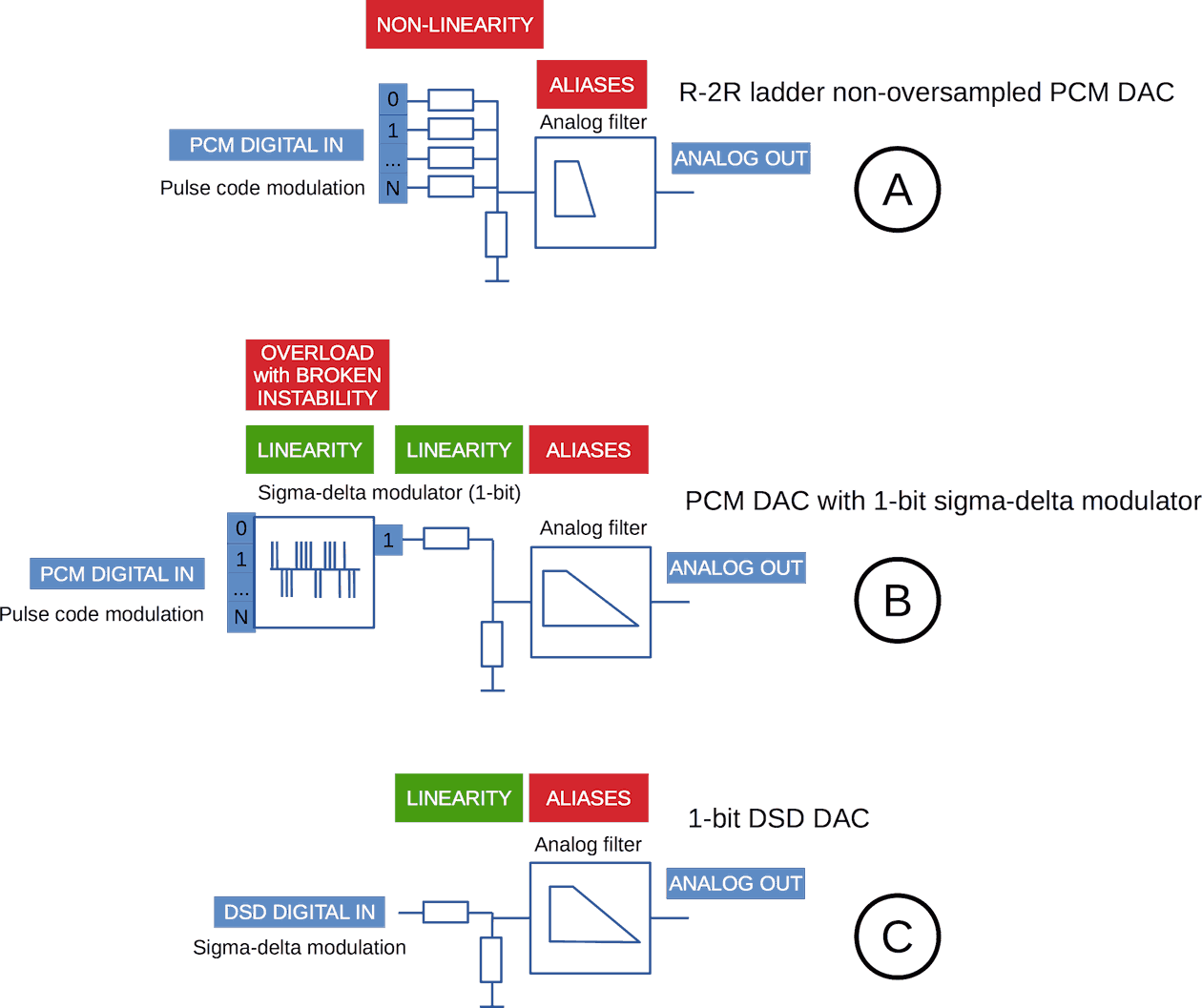
- non-oversampling R2R PCM DAC изображен в части A изображения.
- PCM NOS DAC с сигма-дельта модулятором — в части B.
- примитивный DSD DAC (часть C) также является NOS ЦАП.
Мы видим различные виды конвертеров: два PCM и один из DSD ЦАПов.
Частота дискретизации NOS DAC используется исходя и аналогового фильтра.
Однако, аналоговый фильтр не имеет резкой границы между полосами. Потому, что его усиление плавно изменяется с частотой.
На изображении ниже можно увидеть разницу между цифровым (digital) и аналоговым (analog) фильтрами.
Цифровой фильтр против аналогового
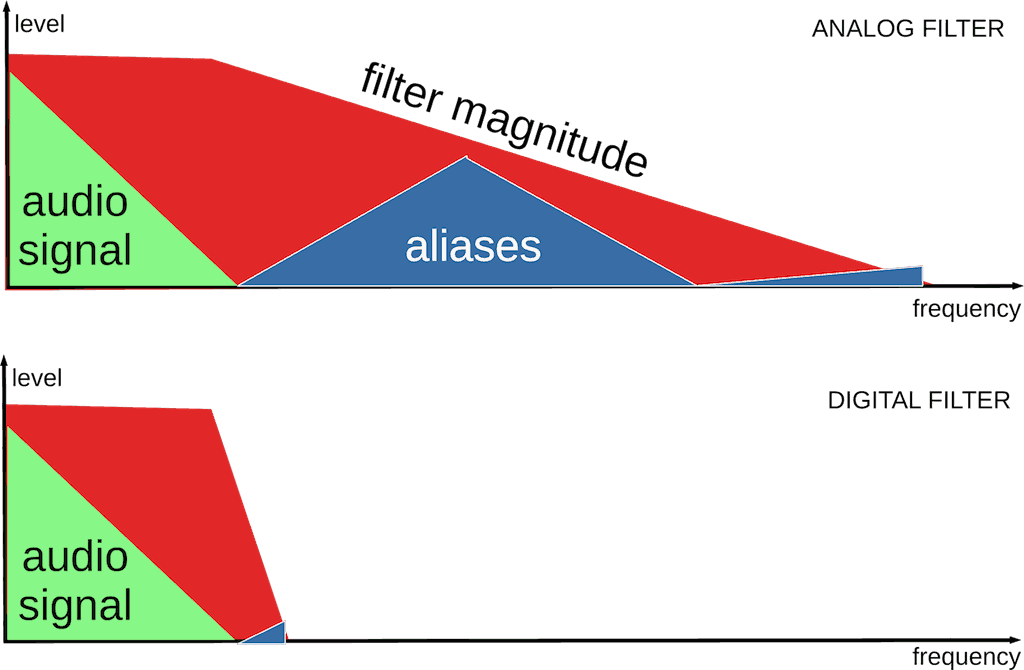
NOS DAC не имеет цифрового фильтра. Следовательно, частота дискретизации non-oversampling ЦАПа должна быть достаточно высокой, чтобы аналоговый фильтр мог эффективно подавить подавить первую по частоте группу алиазов (aliases).
NOS DAC. Частота дискретизации и аналоговый фильтр
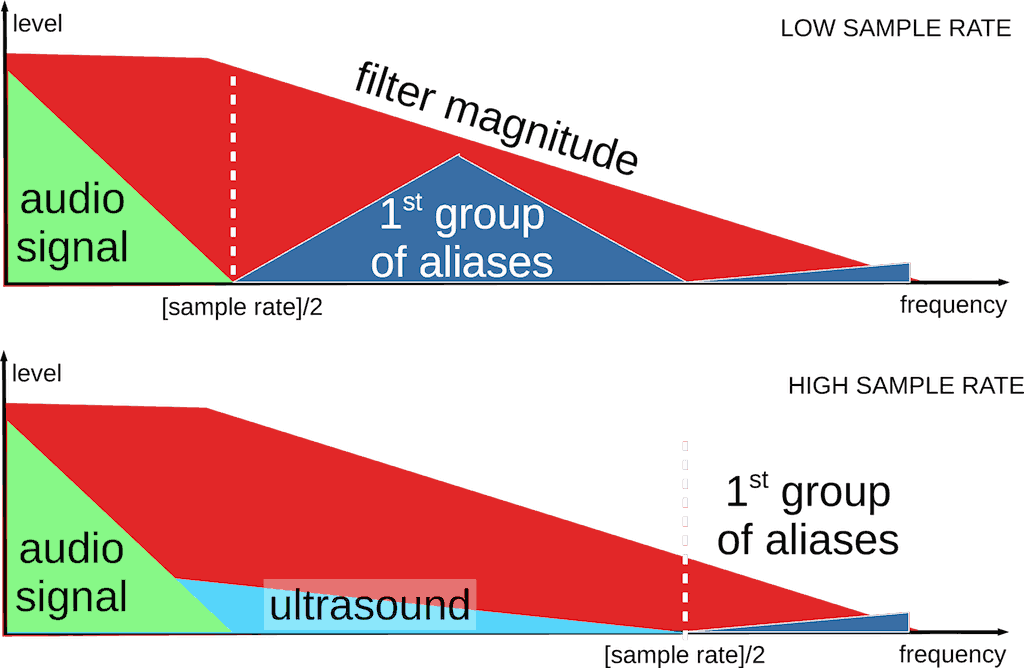
Таким образом, запись должна быть сделана на высокой частоте семплирования ЦАПа.
Interfaces
For its diminutive size, iFi has done a commendable job of cramming multiple useful interfaces and controls into the hip-dac2. The front has both 3.5mm single ended and 4.4mm balanced ports. Whilst there’s some debate about the true merits of balanced for portable use, there’s no denying that the 4.4mm jack/port design makes for a much more robust attachment when out and about and does provide more output power.
The USB ports are interesting. A male Type A port was chosen to provide greater structural integrity, according to iFi. That’s good design, from a longevity perspective. It just means you can’t grab any old USB cable, and will need to ensure you use what’s included in the box, or source your own male/female adapter.
The USB C port can only be used for charging, which is unfortunate, but doubtless again for solid design reasons. There’s a tiny charging/battery LED under this port, although this placement means you can’t see it from above, where you’ll normally be, relative to the unit. Again, no big deal.
Informative LED, not so easy to see while charging.
iFi Audio hip-dac
Price $159
Technical
There are so many similarities between the hip-dac and the hip-dac2 that if it wasn’t for the Sunset Orange color you could not tell the difference even from up close. They seem to be twins and made from the same mold.
Internally they also share most components including the OV series OP amps and the amplifier circuitry design with the exception of the 16 core XMOS processor versus the 8 core variant.
The other aspect that was improved on versus the first hip-dac is within the GMT system which eliminated jitter and made it a thing of the past. So, the hip-dac2 performs better due to the extra processing power with an increase in jitter reduction.
Design
What can I say, the same sunken USB input is used which, to be honest, I understand the concept and do think as iFi does that this plug type, in particular, is strong but I wished it could be reversed and made a female plug for better compatibility with existing wires. Or perhaps a simple USB-C port would do just as well.
The two-volume knobs feel the same but there is a small percentage of that knob on the second version which has less channel imbalance so the knob seems to have been made with better tolerances.
The outer shell is all metal and the finish seems fairly durable but I would baby the unit unless you want a worn and weathered-looking patina. IFi is now offering a suede custom carrying bag for the hip-dac but it’s a separate purchase item.
Performance
These two twins are so similar in everything except there is a small amount of increase of detail and nuance production that makes the hip-dac2 sound more musical plus it has a faster transient response and a better overall tonality.
If I can use a similar comparison here, this comparison would be the same as comparing two PC monitors, one a 60Hz model and the other a 120Hz model of the same shape and size, perhaps from the same manufacturer.
Both are the same size and present you with the same picture, with the same amount of vibrancy, colors and everything looks to be the same, only the 120Hz seems smoother and you see better frame rates. It is at times just a subtle difference but most of the time you could tell the difference.
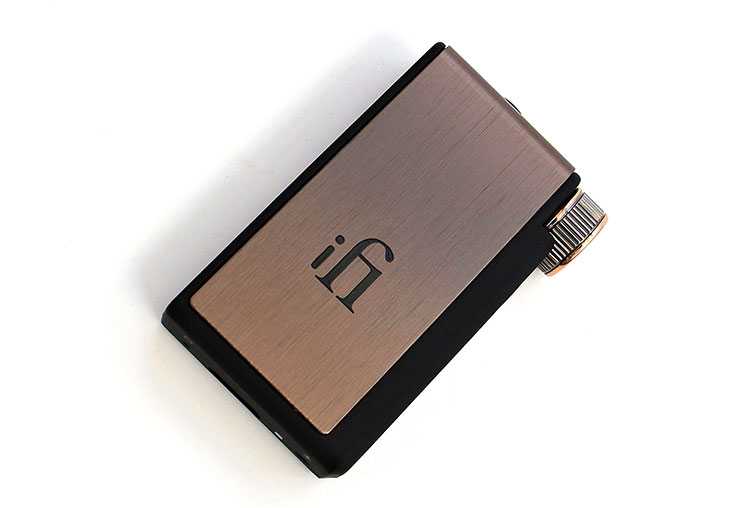
At A Glance
Title
iFi Hip-dac Portable Balanced DAC Headphone Amplifier for Android, iPhone with USB Input Only/Outputs: 3.5mm Unbalanced / 4.4mm Balanced (Unit only)
Thumbnail
Capability
Up to 32-bit/384kHz
DSD Support?
Inputs
1x USB Type-A.
Headphone Outputs
3.5mm Single Ended, 4.4mm Balanced.
Formats Supported
DSD256/128/64, Octa/Quad/Double/Single-Speed DSD, DXD(384/352.8kHz) PCM (384/352.8/192/176.4/96/88.2/48/44.1), MQA
Output Power
400mW @ 16 Ohm.
Power System
Charging via USB-C, CBV1.2 compliant up to 1000mA charging current
Weight
135g
Prime
Price
$139.00
Learn More
Buy on Amazon
Title
iFi Hip-dac Portable Balanced DAC Headphone Amplifier for Android, iPhone with USB Input Only/Outputs: 3.5mm Unbalanced / 4.4mm Balanced (Unit only)
Thumbnail
Capability
Up to 32-bit/384kHz
DSD Support?
Inputs
1x USB Type-A.
Headphone Outputs
3.5mm Single Ended, 4.4mm Balanced.
Formats Supported
DSD256/128/64, Octa/Quad/Double/Single-Speed DSD, DXD(384/352.8kHz) PCM (384/352.8/192/176.4/96/88.2/48/44.1), MQA
Output Power
400mW @ 16 Ohm.
Power System
Charging via USB-C, CBV1.2 compliant up to 1000mA charging current
Weight
135g
Prime
Price
$139.00
Learn More
Buy on Amazon
Battery Life
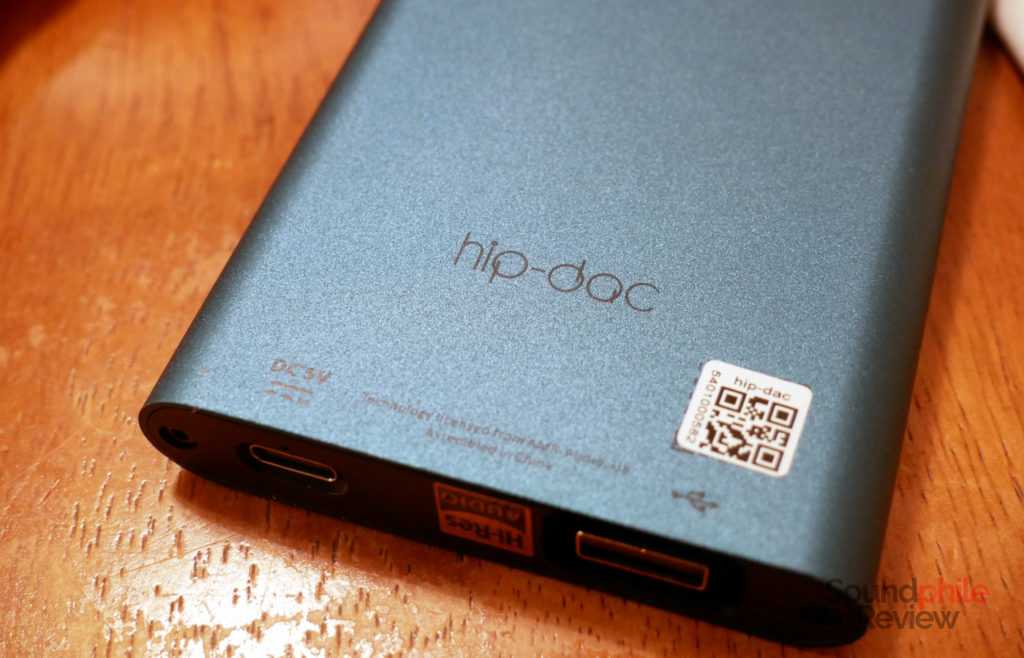
Using a mixed array of headphones to test the iFi hip dac I got about 10 hours of playback on a single charge, which is quite good considering the size of the device. This is quite good actually, though I was not able to get the 12 hours advertised by iFi.
As the volume knob acts as a power switch, the hip dac does not automatically turn off – so if you forget it on like I did multiple times, you will run out of battery faster than you’d like.
One thing I also like is the fact that the full-size USB port does not drain battery from the source device: in order to charge the hip dac you have to use the USB-C port, so you can use the hip dac with portable devices (laptops, tablets, phones) without draining their battery. iFi notes that the hip dac will keep on draining the battery if you connect the USB-C cable when the device was already on.
Выходная мощность
Минимальная мощность, которую я видел, была где-то в районе 30mW на 32ohm нагрузки.
Это лучше, чем у смартфонов/планшетов/ноутбуков.
Но, в общем-то, немного.
Если у вас наушники с импедансом 30-40ohm, то 30mW хватит. Если за 50ohm, то тут уже могут быть вопросы.
Так что если импеданс ваших наушников выше 30ohm, то лучше брать ЦАПы с мощностью от 60mW и выше. Чем выше импеданс, тем больше должна быть мощность. Чем более крупные наушники, тем выше должна быть мощность.
А вот если у вас наушники с небольшим импедансом (скажем, 16-18ohm), то высокая мощность может стать проблемой. Т.к. вам придется слушать музыку где-то на 10% громкости и возможности сделать потише может уже и не быть. В таких случаях может помочь приобретение impedance plug-а (вроде вот такого).
В принципе, для гибридных или полностью арматурных заушных мониторов большая выходная мощность не нужна. А вот для динамических наушников качество звука от выходной мощности будет зависеть напрямую.
iFi hip dac Comparisons
Here’s a brief comparison with other similar devices:
- iFi hip dac vs Topping NX4 DSD: the NX4 DSD and the hip dac share many similarities, starting with the size: the Topping DAC/amp is slightly larger than iFi’s, but they’re really close. Both feature separated ports for charge and data, bass boost technologies and a gain selector. The NX4 DSD offers a dedicated line output which can also act as input, so the device can be used as a pure amplifier; the hip dac has no such feature, but it offers balanced output through a 4.4 mm jack. In terms of sound there are minor differences, if any: the hip dac is warmer, while the NX4 DSD offers faster and more impactful transients. All other things are equal, though. The other main difference is power output: the hip dac offers 400 mW, while the NX4 DSD reaches 293 mW; this allows the iFi DAC/amp to power a larger variety of headphones.
- iFi hip dac vs iFi nano iDSD Black Label: the nano iDSD BL is a bit like the grandfather to the hip dac. It’s definitely bulkier and less powerful, while also offering a few additional features as it offers IEMatch, filters and dedicated line out; on the other hand it does not have the XBass tech on board nor a balanced output. In terms of sound signature they’re really close, though the nano iDSD BL does have more background hiss.
- iFi hip dac vs RHA Dacamp L1: the Dacamp L1 costs more and offers some additional features, but also offers less overall power output (300 mW vs 400 mW). The sound is quite similar and I can’t hear specific differences between the two units. Both offer balanced output, though the Dacamp L1 offers a very rarely seen mini-XLR4. In terms of inputs, though, the RHA offers more flexibility thanks to its optical and 3.5 mm jack inputs. It also offers more flexibility in terms of gain and equalisation thanks to its dedicated knobs. The hip dac is more basic in its features, but it also costs half the Dacamp L1 – and it’s also much more portable.
Comparison to the Topping NX4 & FiiO Q1 MK II
These 3 DACs are very similar in terms of aesthetic, build, and features. Sound-wise, I’d say the NX4 is more sterile and neutral, similar to the sound of the DragonFly Red in comparison to the hip-dac (The DragonFly is a tad less sterile than the NX4 though).
The Q1 is probably the warmest sounding out of this lot, coming in a tad warmer than the hip-dac. The relationship between the Q1 MK II and NX4 is similar to the relationship between the DragonFly Red and hip-dac that we discussed a bit ago.
- The Q1 = Warmer, more relaxed, more lush sounding.
- NX4 = Cooler, more intense/lively, more sterile, and neutral sounding.
- hip-dac vs. DragonFly Red = Same relationship (cool vs. warm).
- Q1 vs. hip-dac = Similar sounding.
- NX4 vs. hip-dac = NX4 is more neutral and sterile sounding. Similar to an Objective 2 actually.
All 3 support DSD and have gain and bass functions.
The NX4 does not have a balanced 4.4mm jack but does have a line out. The Q1 MK II also has a line-out function on the front, in addition to its balanced 2.5mm port and standard 3.5mm single-ended port.
Instead of Type-A, the NX4 has 2 micro USB inputs, 1 for charging and the other for listening. Charge time on the NX4 and Q1 MKII are rated at less than four hours, while the hip-dac claims 3. Probably a minuscule difference there to be honest.
The Q1 MK II has one micro USB port on the back for connection to a PC. For your phone, you’ll either use the auxiliary port for Android, or the supplied Apple Lightning Cable for your iPhone/iOS device.
The NX4 claims 7.5 hours playback time before needing a charge (via USB DAC mode), while the Q1 says around 10 hours for the USB portion, and 20 hours via auxiliary. For me and my Android, aux is ideal. I don’t feel like I’m ever having to charge the Q1 since I use it with both my phone and PC.
In headphone Amp mode, the NX4 claims 28 hours. So basically, if you’re using it as just an Amp into a separate DAC. Related: Beginners Guide: What is a USB DAC
The hip-dac claims 12 hours via USB, but I was only getting 6.5 through my PC.
Weight-wise, the Q1 is the lightest at 101g, followed by the hip-dac at 125g and the NX4 at 148. It should be noted that on my scale the hip-dac weighs in at 134/135g.
Build & Aesthetic
As with all of iFi’s products that I’ve gotten a chance to demo, the hip-dac is no different with regard to build.
It’s built wonderfully, feels heavy and substantial in your hand given it’s very small, and it also boasts a more robust profile than most DACs in this price range or otherwise.
When you finally hold it in your hand, you’ll know where your money went! I firmly believe this is part of what sets iFi apart from other companies.
They always take great care in crafting a product that not only performs well musically but is built for the long haul in terms of longevity and reliability.
If I accidentally dropped this unit, I’d feel comfortable that it would shake it off and ask for more like Mick Foley.
All in all, everything feels solid to the touch. There isn’t much to it as far as moving parts go. It’s a simple and effective Amp/DAC for your mobile phone and also works as a desktop Amp/DAC.
The buttons feel good, the volume pot feels robust, and the connections are good for the most part.
I sometimes have a bit of trouble actually getting the 3.5mm plug into the jack, but that could be a personal problem.
Let’s get into some of the hip-dac’s features!
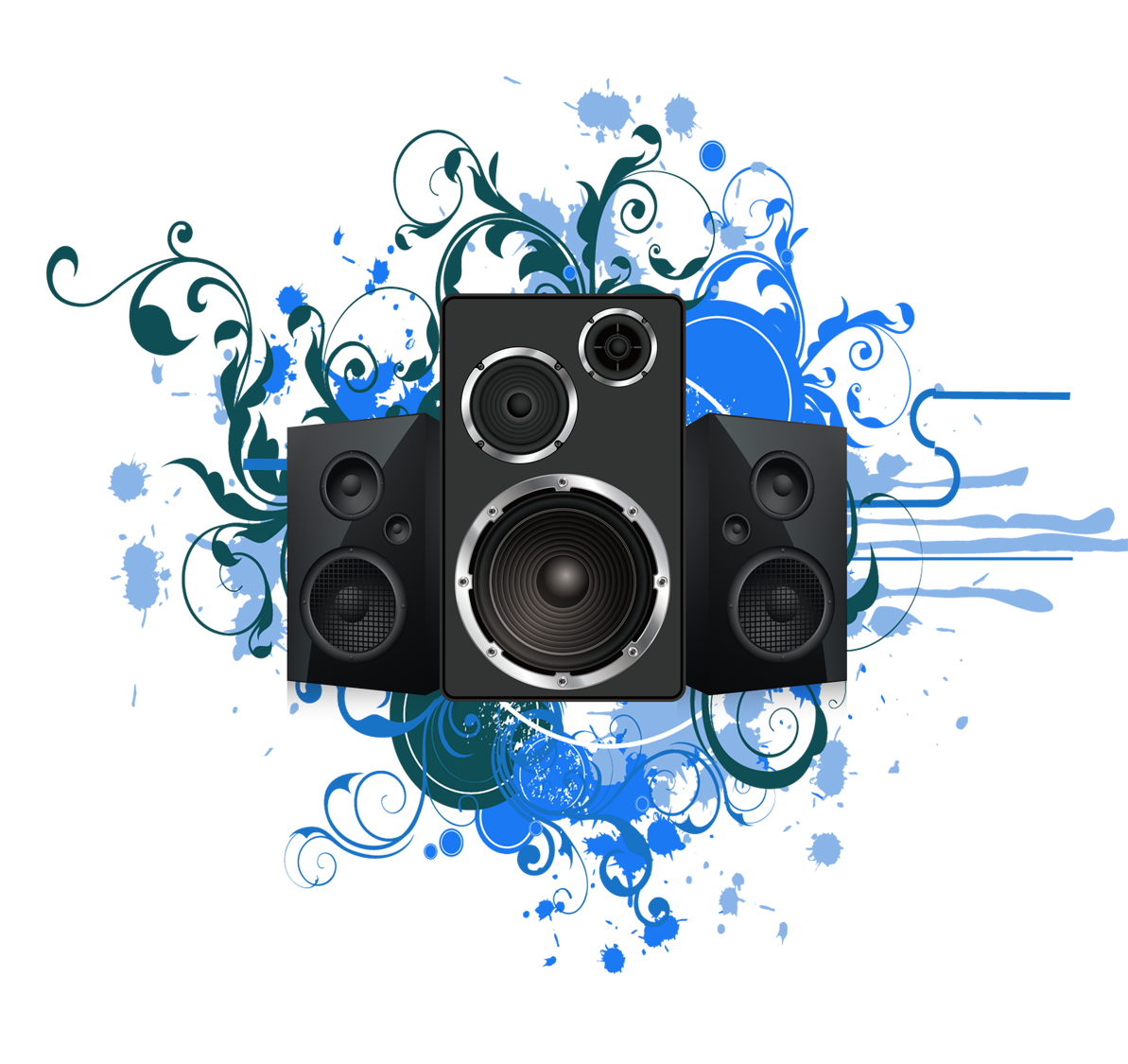







![Размышлизмы eao197: [life.music] продолжение саги о попытке приобщения к бюджетной аудиофилии. кратко о usb-цап и побывавших у меня "свистках"](http://the-voice.ru/wp-content/uploads/1/f/3/1f350ed4e08ad2b1ec358099b4c7d524.jpeg)

![Nos dac. non-oversampling dac. nos цап [качество звука]](http://the-voice.ru/wp-content/uploads/9/7/9/9793c59b84fe4aa878e758e0a75ae01e.jpeg)





















